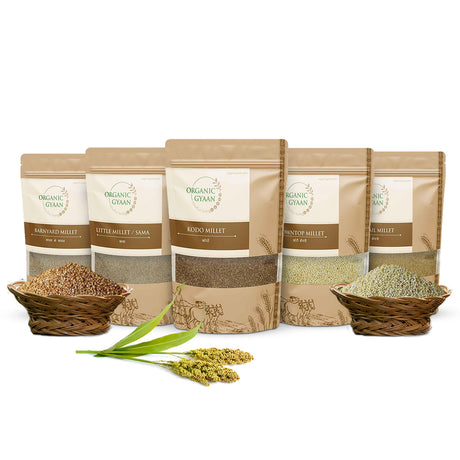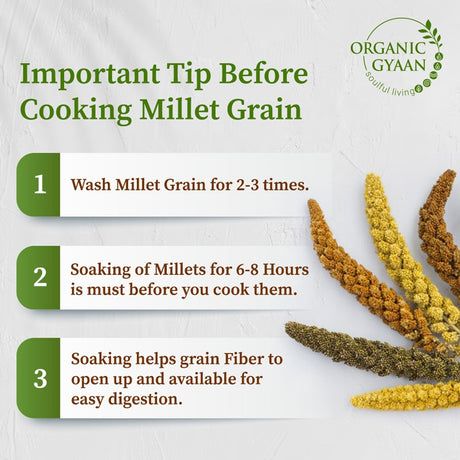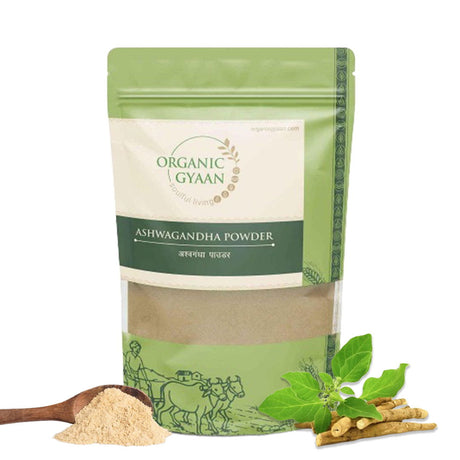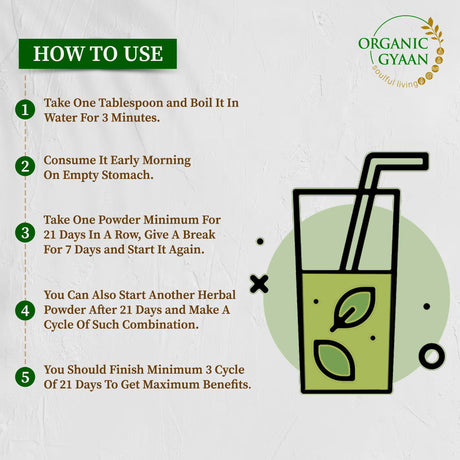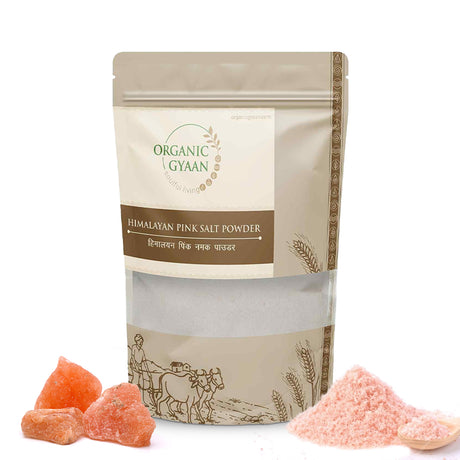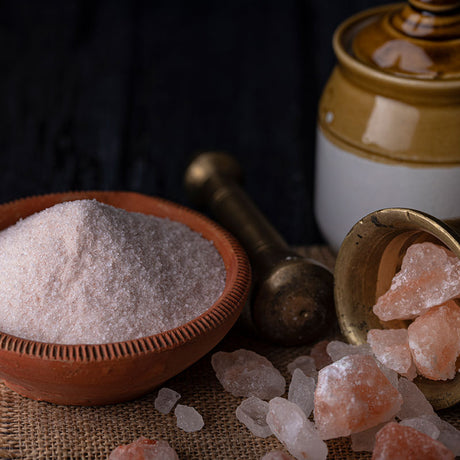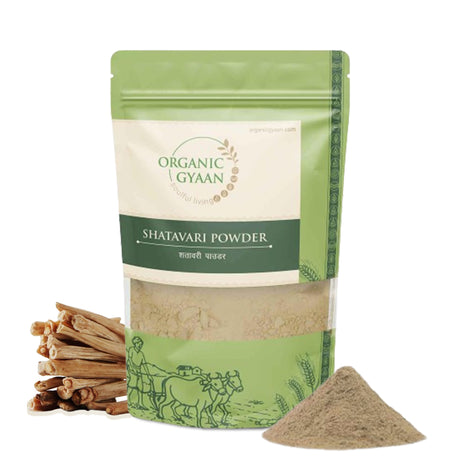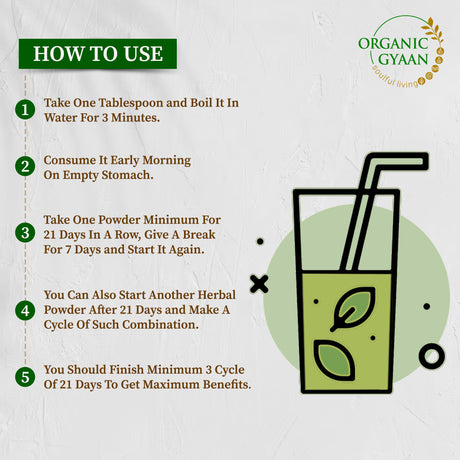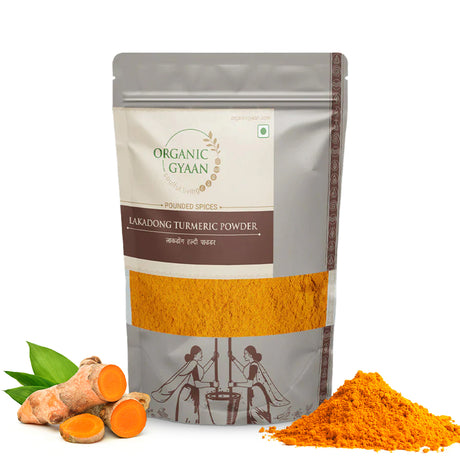Rice is one of the most important staple foods globally, especially in India. It is a versatile grain used in countless dishes, from biryanis to simple rice and dal. Rice is not only a source of energy but also provides essential nutrients. However, there are different types of rice, and understanding their nutritional differences can help you make better dietary choices. In this blog, we will compare brown rice vs white rice, exploring their nutritional values, benefits, and how each can fit into a healthy diet.
What is Rice and Its Benefits?
Rice is a cereal grain that is a staple food for more than half of the world's population. It is naturally gluten-free and provides essential carbohydrates, which are the body's primary source of energy. Rice also contains small amounts of protein and various vitamins and minerals. The benefits of rice include:
1. Energy Source: High in carbohydrates, rice is a great source of energy.
2. Digestive Health: Contains fiber (especially in brown rice) that aids in digestion.
3. Gluten-Free: Suitable for people with gluten intolerance or celiac disease.
4. Versatile: Can be used in various dishes, from savory to sweet.
Difference Between Brown and White Rice
The primary difference between brown rice and white rice lies in their processing and nutritional content.
|
Feature |
Brown Rice |
White Rice |
|
Processing |
Minimally processed, retains bran and germ |
Highly processed, bran and germ removed |
|
Nutritional Content |
Higher in fiber, vitamins, and minerals |
Lower in fiber, vitamins, and minerals |
|
Glycemic Index |
Lower (better for blood sugar control) |
Higher |
|
Taste and Texture |
Nutty flavor, chewy texture |
Mild flavor, soft texture |
|
Cooking Time |
Takes longer to cook |
Cooks quickly |
Nutritional Comparison between Brown Rice and White Rice
Let’s take a closer look at the nutritional content of both types of rice.
|
Nutrient |
Brown Rice (per 100g) |
White Rice (per 100g) |
|
Calories |
111 |
130 |
|
Carbohydrates |
23g |
28g |
|
Fiber |
1.8g |
0.4g |
|
Protein |
2.6g |
2.4g |
|
Fat |
0.9g |
0.3g |
|
Magnesium |
43mg |
12mg |
|
Phosphorus |
83mg |
43mg |
|
Potassium |
79mg |
35mg |
|
Thiamine (B1) |
0.2mg |
0.02mg |
Brown Rice Benefits
1. High Nutrient Content
Brown rice is richer in essential nutrients compared to white rice. It contains more fiber, magnesium, phosphorus, and potassium. These nutrients are vital for maintaining overall health. For example, magnesium helps with muscle function and bone health, while fiber aids digestion and helps prevent constipation. The higher nutrient content makes brown rice a more healthful option for daily consumption.
2. Low Glycemic Index
The brown rice glycemic index (GI) is lower than that of white rice. This means that brown rice causes a slower, more gradual rise in blood sugar levels. This is beneficial for people with diabetes or those trying to manage their blood sugar levels. A lower GI helps in maintaining steady blood sugar levels, reducing the risk of insulin spikes and crashes.
3. Promotes Digestive Health
The higher fiber content in brown rice aids digestion and helps prevent constipation. Fiber adds bulk to the stool and promotes regular bowel movements. It also supports a healthy gut microbiome by providing food for beneficial bacteria. Regular consumption of brown rice can improve overall digestive health and prevent common digestive issues.
4. Supports Weight Management
Due to its higher fiber content, brown rice can help you feel fuller for longer, which can assist in weight management by reducing overall calorie intake. The fiber in brown rice slows down digestion, which helps control appetite and prevents overeating. This can be especially beneficial for those looking to maintain or lose weight.
White Rice Benefits
1. Easy to Digest
White rice is easier to digest than brown rice, making it a good choice for people with digestive issues. Its lower fiber content means it is less likely to cause bloating or gas. This makes white rice suitable for people recovering from illness or those with sensitive stomachs who need a low-fiber diet.
2. Quick Energy Source
White rice is a quick source of energy due to its high carbohydrate content. This makes it ideal for athletes or people needing an immediate energy boost. The easily digestible nature of white rice allows the body to quickly convert it into glucose, providing rapid energy.
3. Versatile and Easy to Cook
White rice has a neutral flavor and softer texture, making it a versatile ingredient that pairs well with a variety of dishes. It also cooks faster than brown rice, which can be convenient for busy lifestyles. The versatility of white rice means it can be used in numerous recipes, from simple steamed rice to elaborate biryanis.
Brown Rice vs. White Rice: Which is Better?
Both brown rice and white rice have their own unique benefits. Here is a quick comparison to help you decide which one might be better for you:
|
Criteria |
Brown Rice |
White Rice |
|
Nutrient Density |
Higher in fiber, vitamins, and minerals |
Lower in fiber, vitamins, and minerals |
|
Digestive Comfort |
Higher fiber content, can be tougher to digest |
Easier to digest, suitable for sensitive stomachs |
|
Blood Sugar Control |
Lower glycemic index, better for managing blood sugar |
Higher glycemic index, quick energy source |
|
Weight Management |
Higher fiber, keeps you fuller for longer |
Lower fiber, may not keep you full as long |
|
Cooking Time |
Takes longer to cook |
Cooks faster |
|
Versatility in Cooking |
Nutty flavor, chewy texture |
Mild flavor, soft texture |
|
Dietary Needs |
Suitable for nutrient-dense diets |
Suitable for low-fiber diets |
Tips for Including Brown and White Rice in Your Diet
1. Balance Your Diet: Include both types of rice in your diet to enjoy the benefits of each. Use brown rice for meals where you want more fiber and nutrients and white rice for meals that require easy digestion.
2. Mixing Rice: Combine brown and white rice in a single dish to get the benefits of both. This can help you gradually get used to the taste and texture of brown rice.
3. Healthy Cooking Methods: Cook rice with vegetables, lean proteins, and healthy fats to make a balanced meal. Avoid frying rice or adding too much oil and butter.
4. Portion Control: Be mindful of portion sizes. A balanced diet includes appropriate portions of rice along with other food groups.
Conclusion
Both brown rice and white rice have their own unique benefits. The best choice depends on your personal health goals and dietary needs. Brown rice offers more nutrients and health benefits, especially for those managing blood sugar levels and seeking a nutrient-dense diet. White rice, with its easy digestibility and quick energy release, is suitable for those with specific digestive needs and for quick meals.
Incorporate both brown rice and white rice into your diet according to your health needs. Experiment with different recipes and find the perfect balance that works for you.


